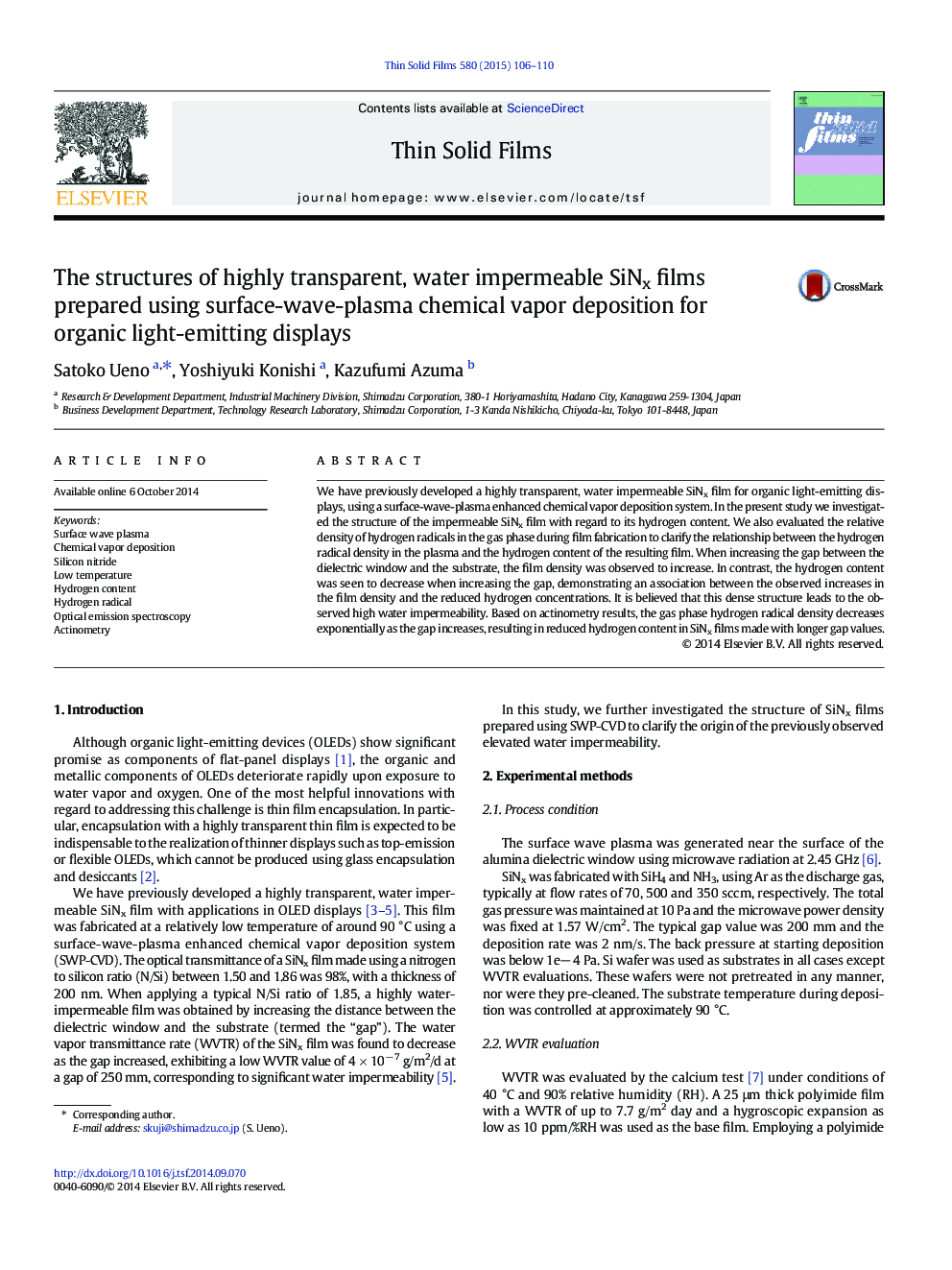| Article ID | Journal | Published Year | Pages | File Type |
|---|---|---|---|---|
| 1664783 | Thin Solid Films | 2015 | 5 Pages |
•Previously, we developed highly transparent, water impermeable SiNx films.•The films were fabricated by surface-wave-plasma chemical vapor deposition.•The film structure and hydrogen content of SiNx films are investigated.•The hydrogen radical distribution in the plasma was established.•The relationship between the film structure and the hydrogen radical was clarified.
We have previously developed a highly transparent, water impermeable SiNx film for organic light-emitting displays, using a surface-wave-plasma enhanced chemical vapor deposition system. In the present study we investigated the structure of the impermeable SiNx film with regard to its hydrogen content. We also evaluated the relative density of hydrogen radicals in the gas phase during film fabrication to clarify the relationship between the hydrogen radical density in the plasma and the hydrogen content of the resulting film. When increasing the gap between the dielectric window and the substrate, the film density was observed to increase. In contrast, the hydrogen content was seen to decrease when increasing the gap, demonstrating an association between the observed increases in the film density and the reduced hydrogen concentrations. It is believed that this dense structure leads to the observed high water impermeability. Based on actinometry results, the gas phase hydrogen radical density decreases exponentially as the gap increases, resulting in reduced hydrogen content in SiNx films made with longer gap values.
